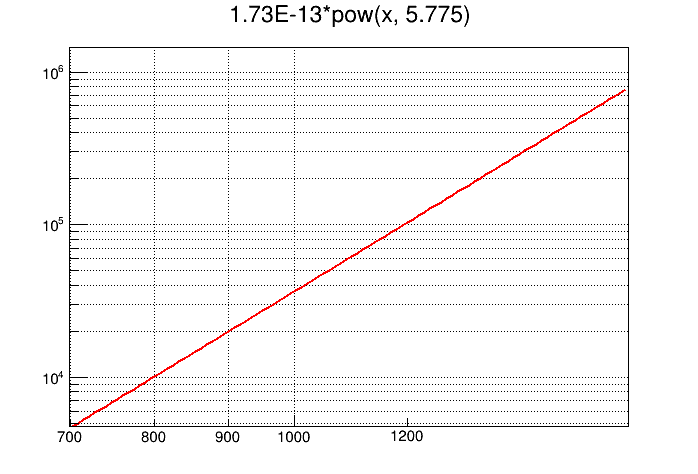Based on this solution
You could do something like:
{
TCanvas* c = new TCanvas();
c->SetGridx();
c->SetGridy();
c->SetLogx();
c->SetLogy();
TLatex *t;
TLine *tick;
TF1* f = new TF1("f", "1.73E-13*pow(x, 5.775)", 699, 1701);
f->GetHistogram()->GetXaxis()->SetMoreLogLabels();
f->GetHistogram()->GetXaxis()->SetNoExponent();
f->Draw();
double ymin = f->GetHistogram()->GetMinimum();
double ymax = f->GetHistogram()->GetMaximum();
double dy = (ymax-ymin);
cout << "ymin/max " << ymin << " / " << ymax << endl;
for (int i=1; i<f->GetHistogram()->GetXaxis()->GetNbins();++i) {
double x = f->GetHistogram()->GetXaxis()->GetBinCenter(i);
double xL = f->GetHistogram()->GetXaxis()->GetBinLowEdge(i);
double xU = f->GetHistogram()->GetXaxis()->GetBinUpEdge(i);
if (xL<=1200 && xU>1200) {
t = new TLatex(x, 3770, Form("%d",1200));
t->SetTextSize(0.035);
t->SetTextFont(42);
t->SetTextAlign(21);
t->Draw();
tick = new TLine(x,ymin,x,ymin+0.0008*dy);
tick->Draw();
}
}
where I determined the y of the TLatex (3770) and the factor for dy (0.0008) by trial and error, but you might find formulas for your case. From this you can surely figure out the vertical grid lines.
